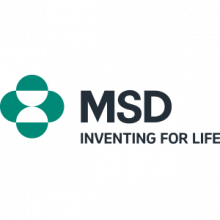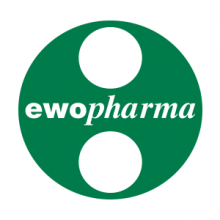Ulcerative colitis and Crohn's disease are nonspecific chronic inflammatory diseases (Inflammatory Bowel Disease - IBD) of the digestive tract. Both diseases have a chronic course, during which rest periods alternate with relapses.
Crohn's disease - MORBUS CROHN

Crohn's disease is named after the American gastroenterologist B. B. Crohn, who first described it in 1932. In Crohn's disease, inflammation can affect any part of the digestive tract, but most often the large and small intestine.
Unlike ulcerative colitis, inflammation affects the intestine in depth, across the width of the wall, with sections of healthy mucosa between the affected sections. Crohn's disease is characterised by a sudden onset and rapid development of complications requiring surgical treatment. The most common are disorders of intestinal patency, the formation of internal or external fistulas and abscesses.
Ulcerative colitis
Author: Prof. MUDr. Tibor Hlavatý, PhD.; IBD center Ružinov
V. internal clinic of LFUK and UNB Bratislava
Ulcerative colitis is an inflammatory disease of the colon and persist throughout a patient’s life in most cases. Ulcerative colitis was first described by Samuel Wilks, the first London internist, in 1859, when it was a very rare disease. In the second half of the 20th century, there was a significant increase in the incidence of ulcerative colitis. The causes of this phenomenon are not clearly known and are attributed to changes in lifestyle, diet, physical activity, industrialization or a combination thereof. Currently, about one in five people in developed countries suffer from ulcerative colitis, representing a prevalence of about 200 patients per 100,000 people.
Symptoms and complications
Ulcerative colitis is a seizure-related lifelong disease with periods of difficulty (relapse) and periods of rest when the patient is asymptomatic (remission). The most common symptom of ulcerative colitis is bloody diarrhea. These can have different intensities. In case of a slight flare, a mushy stool is present two to three times a day, usually in the morning, accompanied by an admixture of a small amount of blood in the stool. Severe cases include aqueous stools mixed with blood and mucus present ten or more times a day, even at night. Diarrhea is often accompanied by a painful urge to void, which often subsides after emptying (so-called tenezms). In the more severe form, abdominal pain is present irrespective to the stool and does not subside after emptying. Quite often we witness a worsening of the disease when smoking is stopped or reduced, during a period of stress, with prolonged use of painkillers (non-steroidal anti-inflammatory drugs such as ibuprufen) or hormonal contraception. In addition, more severe forms of the disease are usually accompanied by increased body temperature or even fever (above 38°C).
The most serious form of the disease is the so-called fulminant ulcerative colitis characterized by persistent diarrhea with extensive bleeding, fever, severe anaemia and disruption of the internal environment. This condition requires immediate admission to the hospital and intensive infusion therapy. In this condition, blood transfusions are often required.
The essence of these difficulties is ulcerative inflammation of the colonic mucosa, it always affects the end of the colon (rectum) and variably the inflammation spreads from the end of the colon higher to the beginning of the colon (so-called caecum or appendix).
Ulcerative colitis is classified according to the extent of colon involvement as proctitis (only the end of the colon in the range of 10-15 cm is affected), left colitis (the left half of the colon is affected) and pancolitis (the entire colon is affected). Depending on the symptom severity, we divide the outbreak of ulcerative colitis into mild, moderate and severe, as shown in the table:
Table Classification of ulcerative colitis activity
According to Truelov and Witts 1955; fulminant colitis according to Hanauer 2000:
| Characteristics | Mild colitis | Moderate colitis | Severe colitis | Fulminant colitis |
|---|---|---|---|---|
| Stools per day | < 4 | 4-6 | > 6 | > 10 |
| Rectal bleeding | Infrequent | Intermediate | Frequent | Continuous |
| Temperature (°C) | < 37 | 37,0-37,8 | >37,8 | >37,8 |
| Heart rate (bpm) | < 90 | < 90 | > 90 | > 90 |
| Hemoglobin (g/l) | > 140 | 100-140 | < 100 | < 80 |
| Erythrocyte sedimentation rate (ESR; mm/h) | <30 | <30 | >30 | > 30 |
| Other | Inflation and severe abdominal pain |
The disease can also be accompanied by extraintestinal symptoms. These so-called extraintestinal complications are similar to Crohn's disease, but are less common. These complications include joint pain, painful subcutaneous inflammatory nodules (erythema nodosum), inflammation of the conjunctiva and other components of the eye (conjunctivitis, episcleritis, iridocyclitis), inflammation of the bile ducts (primary sclerosing cholangitis) and others.
In the stages of flare-ups, the disease is accompanied by significant fatigue and a tendency to depression. The spasm phases are often treated with corticoids (Prednisone, Medrol), which have a relatively high rate of side effects such as nausea, muscle and bone loss, weight gain, high blood pressure, transient diabetes. The side effects of corticoids depend on the dose and duration of corticosteroid use. A large proportion of patients with moderate to severe disease receive long-term anti-inflammatory maintenance therapy that suppresses the immune system. The result is a mild to moderate susceptibility to infections (immunosuppression). The extent and nature of immunosuppression depend on the type and dose of medication used. If a patient is taking immunosuppressants, any impending or ongoing infection should be treated with extra attention, diagnosis and thorough treatment should be a priority.
Diagnosis of ulcerative colitis
If ulcerative colitis is suspected as well as monitored, colonoscopy is indicated. The colonoscope is an endoscopic device, it is basically a thin (12 mm) very flexible tube, which has a camera at the end and its end can be remotely controlled and rotated. With the help of a colonoscope, it is possible to directly display the symptoms on the mucosa and thus assess the nature, intensity and extent of inflammatory changes, the presence of complications. It is also possible to painlessly take small two-millimeter samples of the mucosa (so-called biopsies) during a colonoscopy for histological examination under a microscope.


Figure. Colonoscopic finding in Ulcerative colitis
Left: Image of inflammatory changes in moderate ulcerative colitis
Right: Finding of severe ulcerative colitis with deep ulcers
Author: Prof. MUDr. Tibor Hlavatý, PhD.
The distinction between ulcerative colitis and other forms of acute or chronic inflammation of the colonic mucosa consists of blood sampling, stool examination, and histological examination of biopsy specimens by colonoscopy. To distinguish infectious colitis, the stool is examined for bacterial cultures and microscopically for the presence of parasite eggs. Colonoscopic findings are usually sufficient to differentiate Crohn's disease, and blood sampling for pANCA (peripheral-type antineutrophil antibodies) and ASCA is added. In elderly patients, blood sampling for lactate is added to identify insufficient blood supply to the intestine (so-called ischemic colitis).
Sometimes it is not possible to distinguish between ulcerative colitis and Crohn's disease, and idiopathic intestinal inflammation has an atypical form with features of both diseases. In this case, colitis is described as indeterminate.
Treatment of Ulcerative colitis
The treatment of ulcerative colitis depends on the extent and activity of the disease. The treatment is based, as in the case of Crohn's disease, on the suppression of the inflammatory response with treatments containing mesalazine, corticoids, azathioprine and so-called biological treatment. Compared to Crohn's disease, local treatments such as suppositories and enemas are used more.
Mild forms of the disease are treated depending on the extent of inflammation with mesalazine-containing preparations. Suppositories and enemas are used if the rectum is affected. For more extensive colon involvement, controlled-release tablets up to 4 g daily. If this fails, enemas containing corticoids are indicated. When remission is achieved, doses are reduced to the minimum effective dose.
Mesalazine tablets are used to treat colitis with moderate to severe activity, and corticoids (usually Prednisone or Medrol) at a dose of 0.5-1 g/kg body weight for 1-2 weeks are usually needed with a gradual reduction (tapering) of the dose by 2.5-10 mg per week. Due to the high recurrence rate of moderate and severe UC, maintenance immunosuppressive therapy is indicated in most cases. This is indicated after the first to second relapse of the disease after discontinuation of corticoid therapy.
In the past, the first drug used to maintain remission in patients with ulcerative colitis was azathioprine (Imuran, Imunoprim) as tablets once or twice a day at a dose of 2-2.5 mg / kg of patient weight. With this form of treatment, a long-term satisfactory response is achieved in about two-fifths of patients. When starting treatment, it is often necessary to examine the blood and monitor especially the number of white blood cells, liver and pancreatic tests. Unfortunately, about a third of patients do not tolerate the drug and its use must be discontinued. This manifests mostly as transient changes in blood tests, but about 5-10% of patients also experience temporary discomfort. In those patients who tolerate the drug, it is effective in the long term in about half to two thirds of patients. As more modern products are now available, azathioprine is increasingly being used in combination with biologics or only after their failure.
Presently, the most effective form of immunosuppressive treatment is considered to be biological treatment with agents that block the inflammatory substance TNFα. The first treatment of this kind to be administered to patients with ulcerative colitis was the active substance infliximab (Remicade), which is provided at specialized clinics at centers for the treatment of intestinal inflammation in the form of infusions of about two hours six to twelve times a year.
The newer medicine contains the active substance adalimumab (Humira) and is administered once every two weeks by a special injection or pen under the skin. Most patients are able to administer Humira on their own at home after a short training period, similar to insulin for diabetics. Many patients appreciate the greater freedom to administer treatment, which does not interfere with their work or personal life.
With biologic therapy, about two-thirds of patients achieve long-term satisfactory remission and have no difficulty. The choice between the two products depends on the patient's preferences (separate injections or infusions at the center) and on various clinical circumstances, which are assessed by the a physician, such as allergy to a component of the therapy. Biological medicines are approved by the patient's health insurance company based on a proposal of a doctor from a specialized center.
Severe, so-called fulminant ulcerative colitis is a serious clinical condition and requires hospitalization and intensive treatment with antibiotics, corticoids and infusion correction of disorders of the internal environment (the so-called Oxford regime). In most cases, transfusions and various supportive treatments are also required. If the patient's condition does not improve within 3-7 days, cyclosporine or infliximab is added to the treatment. In about 10% of cases, the condition does not improve despite comprehensive treatment and surgery is necessary.
Surgical treatment is indicated in case of failure of drug treatment. Currently, the preferred surgical solution is the so-called total proctocolectomy with formation of the ileal pouch and ileoanal anastomosis (IPAA). This involves the complete removal of the large intestine and the creation of an artificial rectum from the loop of the small intestine. This is a technically demanding operation that requires an experienced surgeon. An alternative surgical solution is to remove the colon and create a permanent stoma (total proctocolectomy with permanent ileostomy). For urgent procedures, a two-stage surgical solution is usually chosen. In the first step, a colectomy with ileostomy is performed. In the second step, if the anatomical conditions allow, a reconstructive operation is performed, preferably with the formation of the above-mentioned ileal pouch. After the operation, the ulcerative colitis does not return. However, the quality of life after colectomy does not reach the level of a healthy individual. The main problems are an increased number of loose stools 4 to 10 times a day and inflammation of the pouch.
Prognosis of Ulcerative colitis
The prognosis of ulcerative colitis depends on the extent to which the colon is affected and the degree of disease severity. Presently, most patients already achieve long-term remission with the right drugs and live a normal life. Before the era of immunosuppressive treatment, up to half of the patients had to be operated on within the first 5 years after diagnosis. Especially after the introduction of immunosuppressants and biologic therapy, the average length and quality of life of patients is currently comparable to the healthy population. Therefore, long-term care is shifting to the prevention of serious complications such as colon cancer, bone thinning (osteoporosis), complications of long-term corticosteroid treatment (diabetes, high blood pressure, cataracts) and the prevention and consistent treatment of possible infections.

















